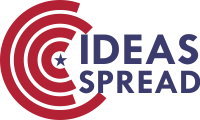A Study of the Impact of Embeddedness and Relational Networks on Organizational Resilience in Public Benefit Organizations
Abstract
The current global natural disasters, financial crises, regional conflicts, and public health emergencies have had a significant impact on all countries, organizations, and individuals, and not only are commercial organizations in a quandary in terms of their survival and development, but nonprofit organizations are also facing unprecedented impacts and challenges. Understanding how public interest organizations have survived the crisis, and in some cases thrived, has drawn increasing attention to Organizational resilience. The article investigates the effects of relational networks, embeddedness, and innovation capacity on the Organizational resilience of public interest institutions, and finds that relational networks have a direct positive effect on the Organizational resilience of public interest institutions; and that bimodal innovation plays a fully mediating role between relational networks and the resilience of public interest institutions. In addition, perceived embeddedness significantly moderated the relationship between inter-organizational relational networks and exploratory innovation, but its moderating effect on intra-organizational networks and exploitative innovation did not reach a significant level. The findings provide theoretical basis and practical insights for nonprofit organizations to optimize resource allocation and enhance crisis response capacity.
References
Birley, S., & Westhead, P. (1990). Growth and performance contrasts between ‘types’ of small firms. Strategic Management Journal, 11(7), 535-557. https://doi.org/10.1002/smj.4250110705
Coleman, J. S. (1994). Foundations of social theory. Harvard University Press.
Granovetter, M. (1985). Economic action and social structure: The problem of embeddedness. American Journal of Sociology, 91(3), 481-510. https://doi.org/10.1086/228311
Hayes, A. F. (2012). PROCESS: A versatile computational tool for observed variable mediation, moderation, and conditional process modeling. [EB/OL]. Retrieved from http://www.afhayes.com/public/process2012.pdf
Henzlova, M. J., & Duvall, W. L. (2017). What do we know? What do we need to know? Journal of Nuclear Cardiology, 24, 252-254. https://doi.org/10.1007/s12350-016-0641-5
McCann, J., & Selsky, J. W. (2012). Mastering turbulence: The essential capabilities of agile and resilient individuals, teams and organizations. John Wiley & Sons.
Nahapiet, J., & Ghoshal, S. (1998). Social capital, intellectual capital, and the organizational advantage. Academy of Management Review, 23(2), 242-266. https://doi.org/10.5465/amr.1998.533225
Plaisance, G. (2022). French non-profit organizations after one year of Covid-19: Insights into organizational resilience. Journal of General Management. https://doi.org/10.1177/03063070221140725
Pomegbe, W. W. K., Li, W., Dogbe, C. S. K., et al. (2020). Enhancing the innovation performance of small and medium-sized enterprises through network embeddedness. Journal of Competitiveness, 12(3), 156. https://doi.org/10.7441/joc.2020.03.09
Rymsza, M., & Zimmer, A. (2004). Embeddedness of nonprofit organizations: Government-nonprofit relationships. In Future of Civil Society: Making Central European Nonprofit-Organizations Work (pp. 169-197). VS Verlag für Sozialwissenschaften.
Teece, D. J. (2007). Explicating dynamic capabilities: The nature and microfoundations of (sustainable) enterprise performance. Strategic Management Journal, 28(13), 1319-1350. https://doi.org/10.1002/smj.640
Tsai, W., & Ghoshal, S. (1998). Social capital and value creation: The role of intrafirm networks. Academy of Management Journal, 41(4), 464-476. https://doi.org/10.5465/257085


This work is licensed under a Creative Commons Attribution 4.0 International License.
Copyright for this article is retained by the author(s), with first publication rights granted to the journal.
This is an open-access article distributed under the terms and conditions of the Creative Commons Attribution license (http://creativecommons.org/licenses/by/4.0/).
























